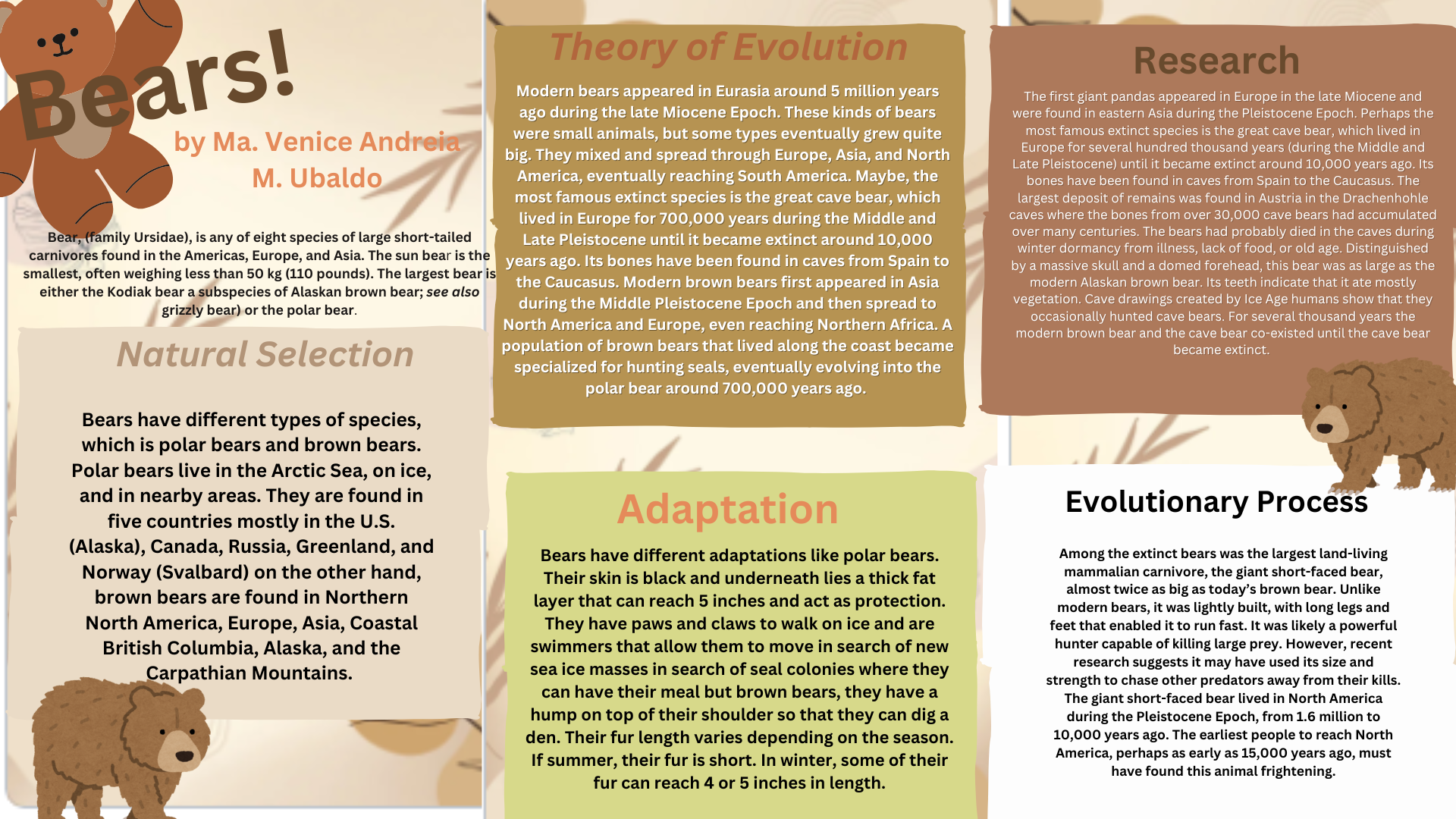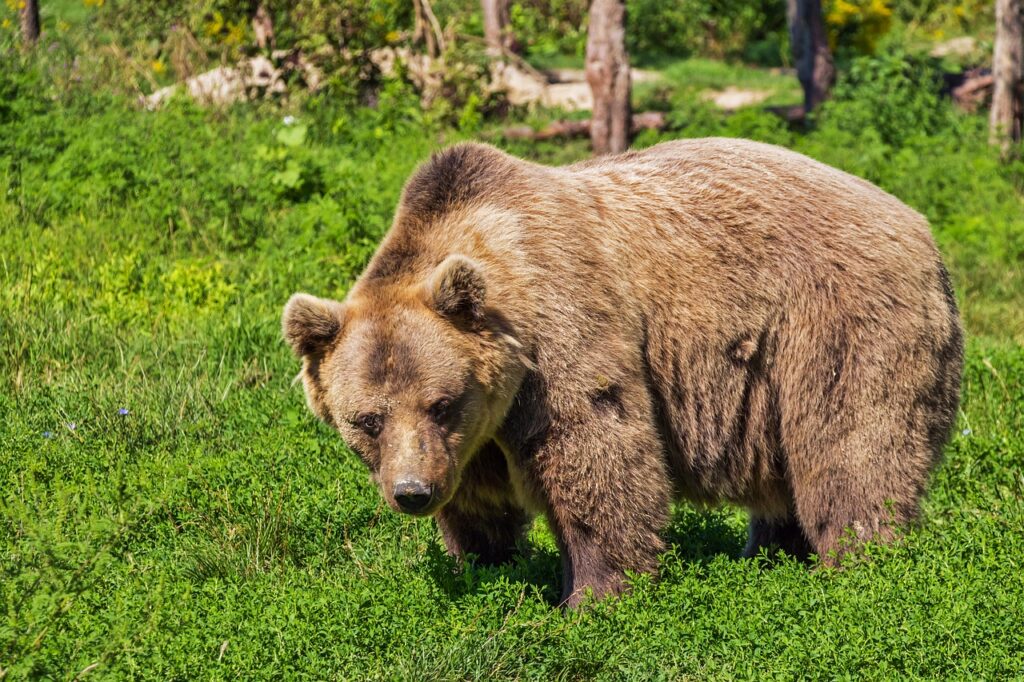
Bears, which are part of the family Ursidae, are any of eight species of large short-tailed carnivores found in the Americas, Europe, and Asia. Black bears or Ursus americanus are common. They are mostly found in parts of the United States and Canada.
Polar bears: Polar bears live in the Arctic Sea, on ice, and in nearby areas. They are found in five countries mostly in the U.S. (Alaska), Canada, Russia, Greenland, and Norway (Svalbard).
Brown Bears: Brown bears are found in Northern North America, Europe, Asia, Coastal British Columbia, Alaska, and the Carpathian Mountains.
Theory of Evolution
Modern bears appeared in Eurasia around 5 million years ago during the late Miocene Epoch. These kinds of bears were small animals, but some types eventually grew quite big. They mixed and spread through Europe, Asia, and North America, eventually reaching South America. Maybe, the most famous extinct species is the great cave bear, which lived in Europe for 700,000 years during the Middle and Late Pleistocene until it became extinct around 10,000 years ago. Its bones have been found in caves from Spain to the Caucasus. Modern brown bears first appeared in Asia during the Middle Pleistocene Epoch and then spread to North America and Europe, even reaching Northern Africa. A population of brown bears that lived along the coast became specialized for hunting seals, eventually evolving into the polar bear around 700,000 years ago.
Adaptation
Bears have different adaptations, like polar bears. Their skin is black, and underneath lies a thick fat layer that can reach 5 inches and act as protection. They have paws and claws to walk on ice and are swimmers that allow them to move in search of new sea ice masses in search of seal colonies where they can have their meal, but brown bears have a hump on top of their shoulder so that they can dig a den. Their fur length varies depending on the season. If summer, their fur is short. In winter, some of their fur can reach 4 or 5 inches in length.
Research
The first giant pandas appeared in Europe in the late Miocene and were found in eastern Asia during the Pleistocene Epoch. Perhaps the most famous extinct species is the great cave bear, which lived in Europe for several hundred thousand years (during the Middle and Late Pleistocene) until it became extinct around 10,000 years ago. Its bones have been found in caves from Spain to the Caucasus. The largest deposit of remains was found in Austria in the Drachenhohle caves, where the bones from over 30,000 cave bears had accumulated over many centuries. The bears had probably died in the caves during winter dormancy from illness, lack of food, or old age. Distinguished by a massive skull and a domed forehead, this bear was as large as the modern Alaskan brown bear. Its teeth indicate that it ate mostly vegetation. Cave drawings created by Ice Age humans show that they occasionally hunted cave bears. For several thousand years, the modern brown bear and the cave bear coexisted until the cave bear became extinct.
Evolutionary Process
Among the extinct bears was the largest land-living mammalian carnivore, the giant short-faced bear, almost twice as big as today’s brown bear. Unlike modern bears, it was lightly built, with long legs and feet that enabled it to run fast. It was likely a powerful hunter capable of killing large prey. However, recent research suggests it may have used its size and strength to chase other predators away from their kills. The giant short-faced bear lived in North America during the Pleistocene Epoch, from 1.6 million to 10,000 years ago. The earliest people to reach North America, perhaps as early as 15,000 years ago, must have found this animal frightening.
About the Author

Ma. Venice Andreia M. Ubaldo is a young writer at the age of 9. When she started her homeschooling journey in kindergarten, she used to write letters to her friends to stay connected with them. Later on, this inspired her to write simple notes and essays to express herself more. When she’s not writing, Venice enjoys making blind bags as gifts and playing chess with her family and friends.

